With the popularity of the concept of sustainable development, green buildings have become the main development direction of future architecture. As a kind of eco-friendly material, bamboo is featured by renewable, growing fast, economical, safe, durable, and so on. Bamboo can be utilized as a building material for scaffolding, bridges, houses and buildings. Bamboo, like wood, is a natural composite material with a high strength-to-weight ratio useful for structures. Bamboo’s strength-to-weight ratio is similar to timber, and its strength is generally similar to a strong softwood or hardwood timber. Bamboos are some of the fastest-growing plants in the world, due to a unique rhizome-dependent system.
The code and analysis of the characteristics of bamboo material
The first structural design codes for bamboo in-the-round were published by ISO in 2004 (ISO 22156 Bamboo – structural design, ISO 22157-1 Bamboo – Determination of Physical and Mechanical properties part 1 and ISO 22157-2 Bamboo – Determination of Physical and Mechanical properties part 2: Laboratory manual. Colombia was the first country to publish a country-specific code in the structural use of bamboo (NSR-10 G12). Since then, Ecuador, Peru, India and Bangladesh have all published codes.
Bamboo is more susceptible to decay than timber, due to a lack of natural toxins and its typically thin walls, which means that a small amount of decay can mean a significant percentage change in capacity. There are three causes of decay: beetle attack, termite attack and fungal attack (rot). Untreated bamboo can last 2-6 years internally, and less than a year if exposed to water.
To protect bamboo from decay, two design principles are required:
1) The bamboo must be kept dry throughout its life to protect it against rot (fungi). This fundamental architectural principle is called “durability by design”, and involves keeping the bamboo dry through good design practices such as elevating the structure above the ground, using damp proof membranes, having good drip details, having good roof overhangs, using waterproof coatings for the walls, etc.
2) The bamboo must be treated to protect it against insects (namely beetles and termites). The most common and appropriate chemical to treat bamboo is boron, normally either a mixture of borax and boric acid, but it also comes in one compound (di-sodium tetraborate decahydrate).
Bamboo joint includes a stem ring, bamboo shoots shell and transverse wall. Bamboo vascular bundles are parallel to each other in the internodes of bamboo stalks, and the vascular bundles at bamboo joints are bent and crisscrossed, which makes the higher variability and non-uniformity in mechanical properties than that of wood. The bamboo joints can improve the compressive strength of bamboo stalks. The compression strength parallel to grain at bamboo joints is 8% higher than that in internodes, and the compression strength perpendicular to grain at bamboo joints is 45% higher than that in internodes.
The mechanical properties of bamboo are closely related to its moisture content, bamboo stalk parts and the type of bamboo, thus, these factors should be fully considered when studying the bamboo.
The Properties of bamboo
Bamboo, a highly versatile resource and widely available, is being used as an engineering material for the construction of houses and other buildings. There are some inherent properties of bamboo, that makes it a preferred material for longevity and sustainability, which are discussed below.
Tensile strength
Bamboo is able to resist more tension than compression. The fibres of bamboo run axially. In the outer zone are highly elastic vascular bundles that have a high tensile strength. The tensile strength of these fibres is higher than that of steel, but it’s not possible to construct connections that can transfer this tensile strength. Slimmer tubes are superior in this aspect too. Inside the silicated outer skin, axial parallel elastic fibers with a tensile strength upto 400 N/mm2 can be found. As a comparison, extremely strong wood fibers can resist a tension upto 50 N /mm2.
Compressive strength
Compared to the bigger tubes, slimmer ones have got, in relation to their cross-section, a higher compressive strength value. The slimmer tubes possess better material properties due to the fact that bigger tubes have got a minor part of the outer skin, which is very resistant to tension. The portion of lignin inside the culms affects compressive strength, whereas the high portion of cellulose influences the buckling and the tensile strength as it represents the building substance of the bamboo fibers.
Elastic modulus
The accumulation of highly strong fibers in the outer parts of the tube wall also work positively in connection with the elastic modulus like it does for the tension, shear and bending strength. The higher the elastic modulus, the higher is the quality of the bamboo. Enormous elasticity makes it a very useful building material in areas with very high risks of earthquakes.



Anisotropic properties
Bamboo is an anisotropic material. Properties in the longitudinal direction are completely different from those in the transversal direction. There are cellulose fibers in the longitudinal direction, which is strong and stiff and in the transverse direction there is lignin, which is soft and brittle.
Shrinkage
Bamboo shrinks more than wood when it loses water. The canes can tear apart at the nodes. Bamboo shrinks in a cross section of 10-16 % and a wall thickness of 15-17 %. Therefore it is necessary to take necessary measures to prevent water loss when used as a building material.
Fire resistance
The fire resistance is very good because of the high content of silicate acid. Filled up with water, it can stand a temperature of 400° C while the water cooks inside.
The working of bamboo
The work of bamboo is used as per the desired need and length. The different working of bamboo involves;
Splitting
The cane is split in halves and quarters and then driven apart by a wedge. It can also be split with a knife frame into four or eight segments. By means of splitting you get halved canes, strips and battens. To get planks, all the nodes are smashed and the wall of the pole is split over its entire length and forced open until the wall of the pole lies flat. Up to the age of 18 months, the canes can be peeled. The strips can be used as ties or be woven to make strings and ropes.
Shaping
Bamboo available in nature is usually circular in cross section. But if bamboo is made to grow in a box of square shape it attains the shape of that box, so that it can be better used for making connections.
Bending
Freshly cut, bamboo can be bent by heating and will keep this shape after drying. When heated above 150° C, bamboo starts changing its shape and remains as such after it goes cold.
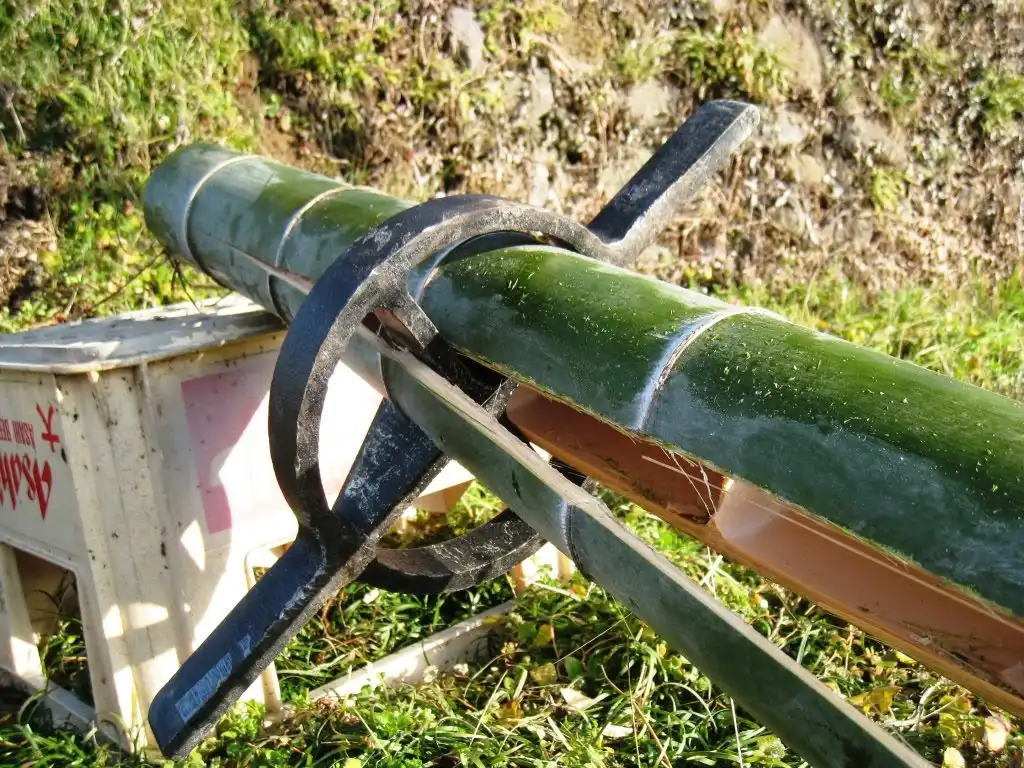

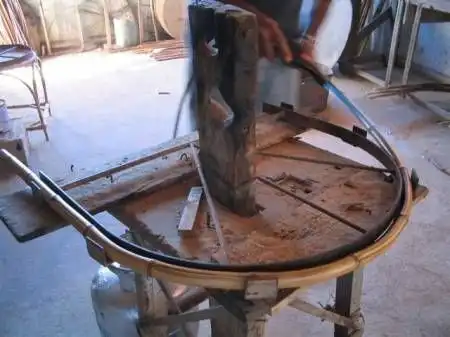
Applications of Bamboo for construction and architecture
After global warming and sustainability issues emerged, bamboo as building materials is widely discussed and reviewed. Some architects and builders nowadays tend to choose bamboo for building material. High-quality woods for construction are rarely found nowadays because of deforestation. Wood also takes a long time to regrow and is ready to use as construction materials. Meanwhile bamboo can be harvested in a short time, which is between 3-5 years. When planting, bamboo also releases oxygen into the air, the ability that cannot be performed by industrial materials like steel, plastic and concrete. For these reasons, bamboo has been widely known as sustainable building materials and is being used in architectural and construction works. Each of them is explained below.

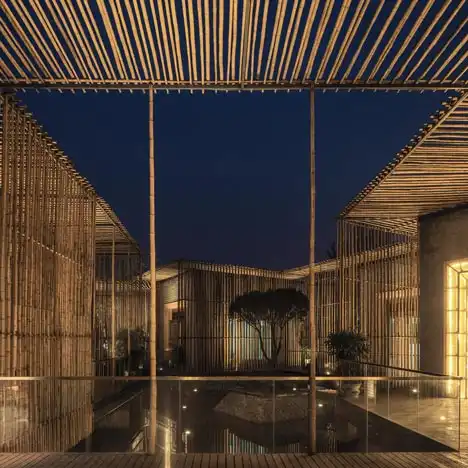



Bamboo used in Architecture
In bamboo architecture, bamboo, as the main architectural structure, plays the role of load holding of buildings. Bamboo has strong adaptability in thickness and strength and can make different combination adjustments accordingly based on the architectural structure to satisfy the requirement of different structural performance. On the other hand, the technical requirements of bamboo buildings are relatively low and can easily be integrated into local architectural structures, for example, the integration of bamboo with soil, concrete, and glue, etc, can help increase the structural strength. The stiffness, strength and stability of nodes mainly are mainly based on the joint strength between structure components of the building. Therefore, the increasing improvement of connection structure has brought more contributions to the diversification of bamboo architecture.
Bamboo used as Building “Skin”
The outwalls of buildings can be called “Skin”, which can reflect the culture of the building. The diversity in bamboo use and its integration with other materials provides more opportunities to the diversification of building “skin” and the improvement of architectural aesthetics. Typically, the use of bamboo as building skins can be divided into three types:
(1) Single skin: A “bamboo skin” formed by only one material through various combinations, which is a relatively low level application of one kind of bamboo material in building skins. It is of simple production technology with low cost and good ventilation and sunlight prevention. Besides, it is helpful for keeping the architectural features with local architectures, however, it has shortcomings such as poor lighting conditions and privacy. Therefore, it is usually used in exterior space and the enclosure of less important space.
(2) Multilayer skin: Juxtaposed and composed by two or more materials, which is a typical design method of using complementation of material properties, and can effectively overcome defects of single bamboo material. The juxtaposition of bamboo and glass is a very common 1909 combination form. The bamboo can filter outside inference (such as sunlight, the line of sight), and glass can block the sound and heat that bamboo cannot filter. The exchange between indoor and outdoor environments occurs from the open and close of the bamboo curtain, creating a breathable skin.
(3) Composite skin: Created by blending two or more materials, which breakthroughs their inherent properties and creates a third type of skin. In general, new skin incorporates the advantages of composite materials, for example, the composition of bamboo and rammed earth walls can both effectively reduce the weight of rammed earth walls and enhance the force bearing capability along the radial direction of bamboo.
Bamboo used as Building Decoration
Building decoration can be divided into architectural interior and exterior decoration. Building interior decoration should fully considerate the natural characteristics of bamboo materials. The surface of bamboo materials is smooth, lightweight and flexible, with natural and gentle color, clear and beautiful texture. Bamboo decoration should make full use of the sense of reality, color, surface gloss and texture to reflect the nature of bamboo materials. The main decoration colors of bamboo materials include bamboo green, tabasheer and carbonization. In addition, bamboo can easily be bent, making it an ideal material for manufacturing all kinds of beautiful furniture. Besides building skins, external decoration of buildings also includes virescence surrounding the building. The greening effect of bamboo on buildings can present in many forms, which can be classified into three main categories: clump, row, and tract. Bamboo grove in clump shape is concise and clear, pure and fresh, which is suitable for ornament and decoration to improve the taste of a building; bamboo grove in row shape is usually used in boundary space. Besides the role of decoration, it also has the function of blocking and shielding; to foil the environmental atmosphere, bamboo grove in tracts can usually be seen in an open area,
Bamboo used as laminated sheets and planks
Bamboo can be cut and laminated into sheets and planks. This process involves cutting stalks into thin strips, planing them flat, and drying the strips; they are then glued, pressed and finished. Long used in China and Japan, entrepreneurs started developing and selling laminated bamboo flooring in the West during the mid-1990s; products made from bamboo laminate, including flooring, cabinetry, furniture and even decorations, are currently surging in popularity, transitioning from the boutique market to mainstream providers such as Home Depot. The quality of bamboo laminate varies among manufacturers and varies according to the maturity of the plant from which it was harvested.


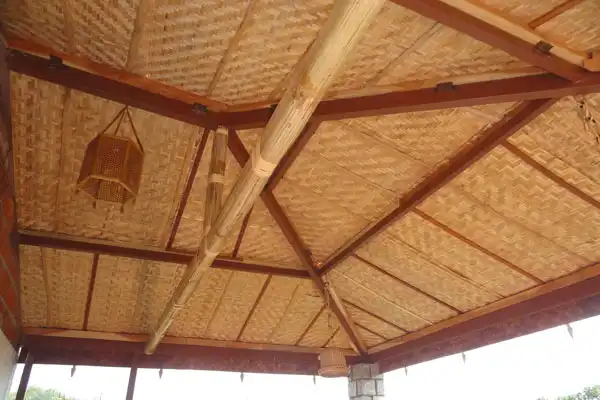




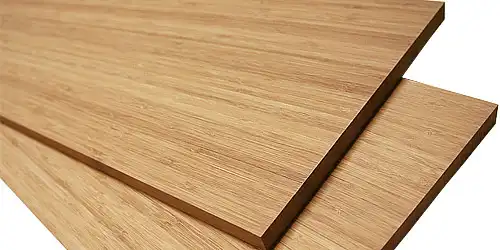

Bamboo used in foundation
In spite of their short life considerable use of bamboo is made as foundation or supporting posts in case of houses built on raised platforms. The various types of foundations constructed with bamboo are, Bamboo which is in direct contact with ground surface, Bamboo fixed to rock or preformed concrete footings, Composite bamboo or concrete columns and Bamboo piles.
Bamboo used in floor
Bamboo has been used as an alternative for flooring because of its physical similarities to true hardwoods. Bamboo floor manufacturers and sellers promote its strength, durability, its eco-friendliness and its natural resistance to insects and moisture. The hardness of traditional bamboo flooring ranges from 1180 (carbonized horizontal) to around 1380 (natural), while newer manufacturing techniques including strand woven bamboo flooring range from 3000 to over 5000 using the Janka hardness test. The various types used are, Small bamboo culms, Split bamboo and Flattened bamboo.
Bamboo used in wall
The most extensive use of bamboo in construction is for the walls and partitions. The major elements, the posts and beams, generally constitute part or structural framework. They are to carry the self-weight of building and loads imposed by the occupants and the weather. An infill between framing members is required to complete the wall.
Bamboo used in roof
The roof offers protection against extremes of weather including rain, sun and wind, and to provide shelter, clear and usable space beneath the canopy. The bamboo structure of a roof can comprise of purlins, rafters and trusses. The different forms include, a bamboo purlin and beams, supported on perimeter postsCorrugated sheets made out of bamboo, a layer of bitumen is sandwiched between two mats of bamboo and Plastered bamboo.
Bamboo used in scaffolding
Bamboo material is environmentally-friendly and low-cost. It has been widely used in the construction of new buildings, renovation, repair works, slope maintenance, and neon signage works. Most of the construction operations require the use of scaffolding and material is an important factor, which affects the competitiveness as well as its overall investment. Because of the favorable relationship between load-bearing capacity and weight, bamboo can be used for the construction of safe scaffoldings even for very tall buildings. Only lashed joints are used. The cane extension is carried out by lashing the cane ends together with several ties. The ties are arranged in such a way that forces acting vertically downwards wedges the nodes in the lashing.
Bamboo used in doors and windows
Bamboo replaces timber frames appropriate to function. mat shutters fixed to bamboo frame bamboo boards fixed to the frame which wall can be used as a door. Small frame to the top of the wall can serve as windows.
Conclusion
India is still catching up with the world in adopting the newly developed bamboo building construction technologies for mainstream buildings. Several research institutes are working on bamboo building systems, but the lab to land transfer is very slow. Alternative technologies need to be seriously viewed in light of global warming and rising inflation. The properties as a top-grade building material and increased availability of bamboo in our country make it possible to use bamboo in the field of construction extensively. Its high valued utilization not only promotes economic development but also saves forest resources to protect our ecological environment as a wood substitute. As an economic building material, bamboo’s rate of productivity and cycle of annual harvest outstrips any other naturally growing resource.
Info Source – Atlantis press.com, worldbamboo.net, sciencedirectassets.com,
Image Source: scmp.com, dezeen.com, designboom.com, archdaily.com, completeshutters.co.uk, sathyaconsultants.files.wordpress.com, bambooimport.com, pinterest.com, woodworkerssource.com, bambubuild.com, oris.hr, architectureau.com, squarespace.com, indesignlive.hk

